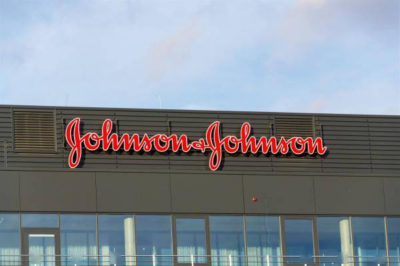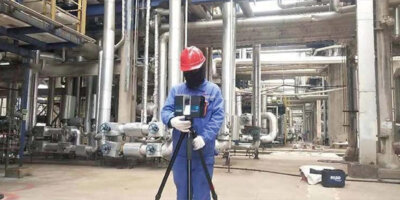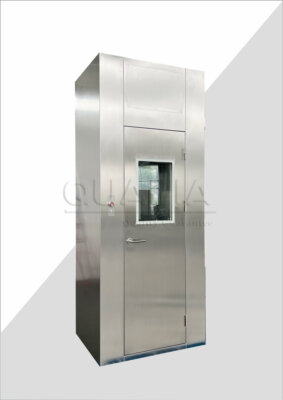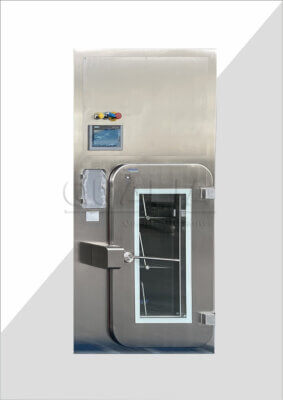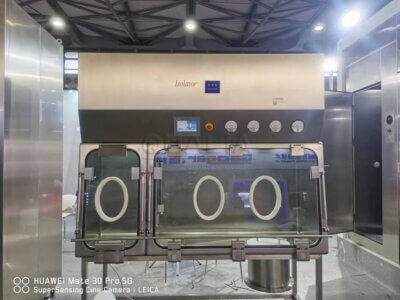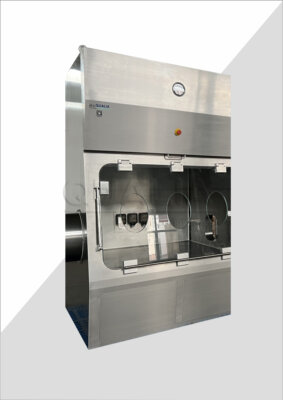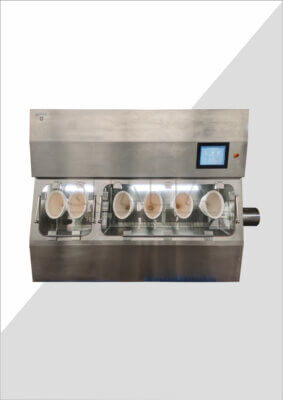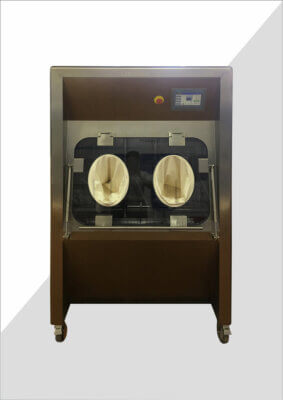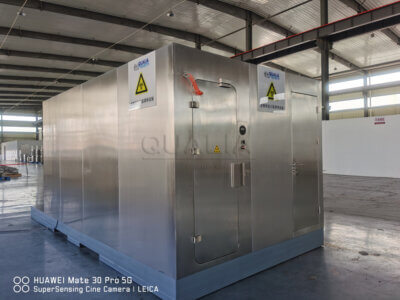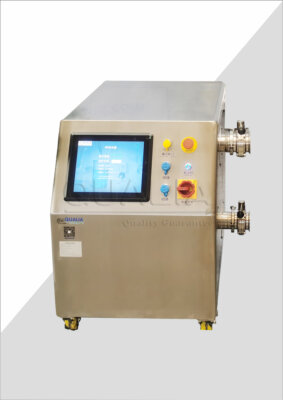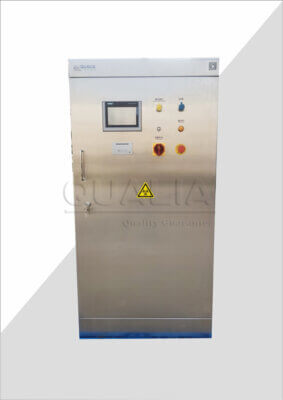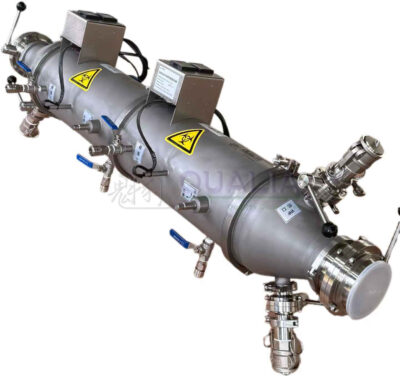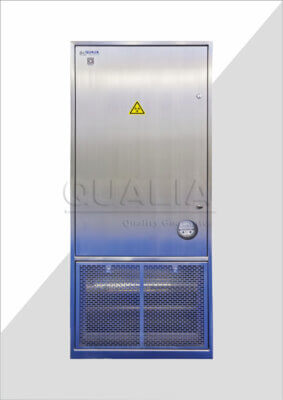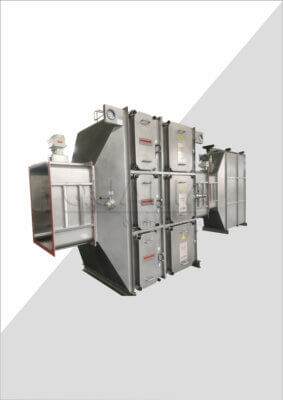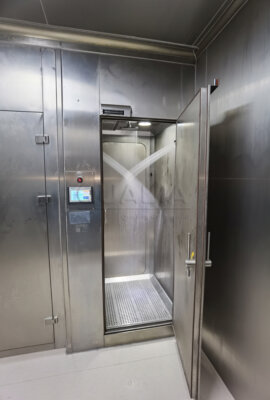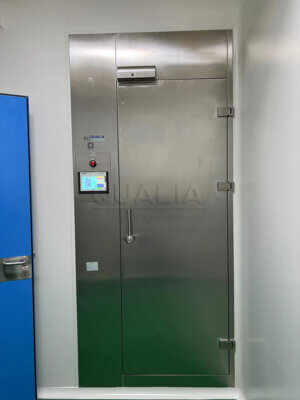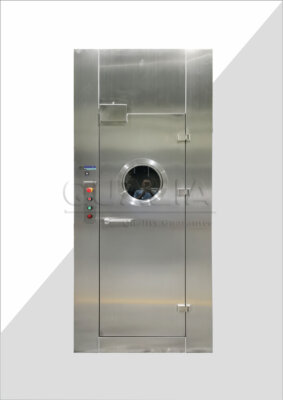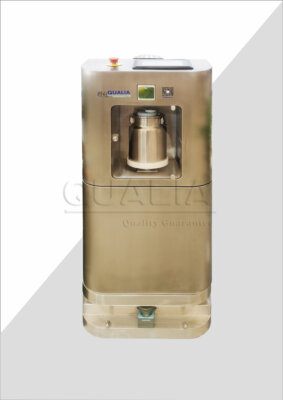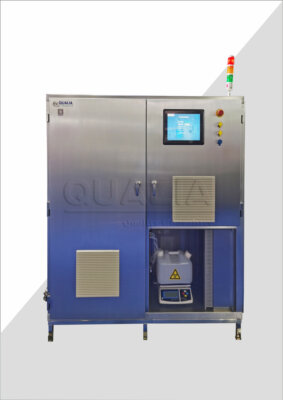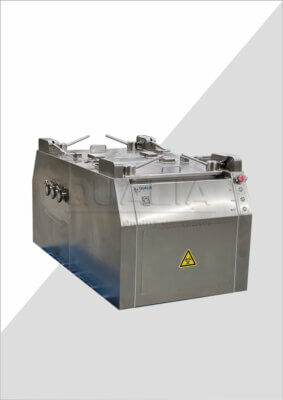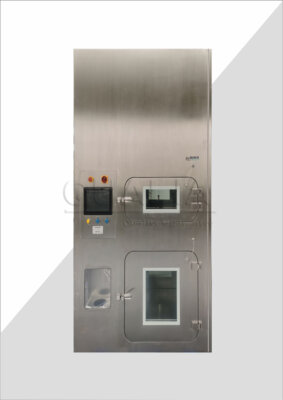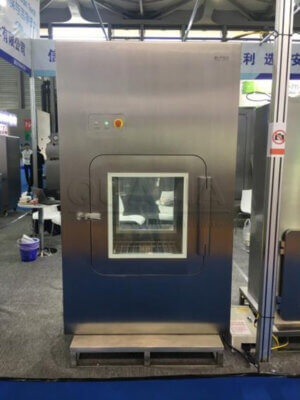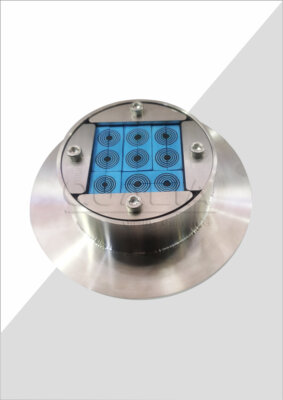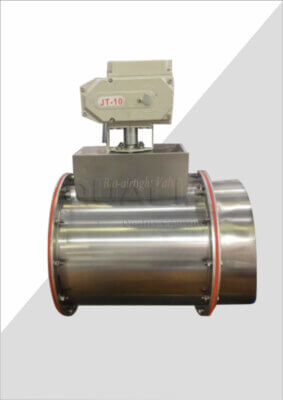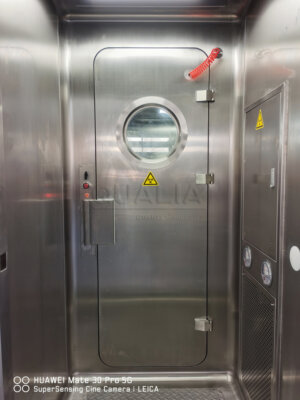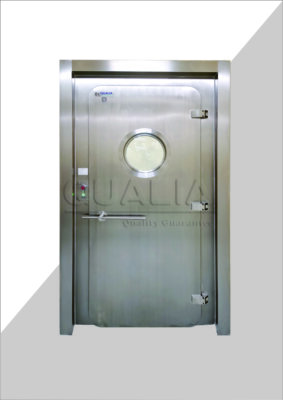Problem: Laboratory managers and facility engineers face critical challenges when APR door pneumatic seals fail unexpectedly, potentially compromising containment protocols and regulatory compliance. Installation errors account for approximately 40% of premature seal failures, while inadequate maintenance practices contribute to 35% of system downtime incidents.
Agitate: When pneumatic seals malfunction, the consequences extend far beyond simple equipment failure. Contamination risks escalate dramatically, research integrity becomes compromised, and regulatory violations can result in costly shutdowns. The complexity of modern containment systems means that even minor seal issues can cascade into major operational disruptions.
Solution: This comprehensive guide provides expert-tested strategies for apr door seal installation, maintenance protocols, and troubleshooting techniques that ensure optimal performance and regulatory compliance. You’ll discover professional insights from industry specialists, proven diagnostic methods, and practical solutions that minimize downtime while maximizing containment integrity.
QUALIA Bio-Tech has been at the forefront of developing advanced pneumatic seal solutions for critical containment applications, providing the expertise and products that professionals rely on worldwide.
What is APR Door Pneumatic Seal Installation?
APR door pneumatic seal installation represents a specialized process designed to create airtight barriers in high-containment environments where pressure differentials are critical for safety and operational integrity. These sophisticated sealing systems utilize compressed air to inflate elastomeric seals around door perimeters, creating robust barriers against contamination, chemical exposure, and environmental hazards.
The installation process involves integrating pneumatic actuators, pressure sensors, and control systems with precision-engineered seal assemblies. Modern APR seal systems typically operate at pressures ranging from 15-30 PSI, depending on application requirements and environmental conditions. The technology has evolved significantly, with current systems achieving leak rates as low as 0.1% per hour under standard testing conditions.
Professional installations require understanding complex interactions between door frame geometry, seal material properties, and pneumatic system parameters. The process demands specialized tools, calibrated testing equipment, and comprehensive knowledge of containment protocols. According to industry data, properly installed APR seals can maintain containment integrity for 5-10 years with appropriate maintenance, making installation quality a critical factor in long-term performance.
| Installation Component | Function | Critical Parameters |
|---|---|---|
| Pneumatic Actuator | Seal inflation control | Pressure range: 15-30 PSI |
| Elastomeric Seal | Primary barrier | Durometer: 65-85 Shore A |
| Pressure Sensors | System monitoring | Accuracy: ±2% full scale |
| Control System | Automated operation | Response time: <5 seconds |
How to Install APR Door Pneumatic Seals Properly?
Pre-Installation Assessment and Preparation
Successful apr door seal installation begins with comprehensive site evaluation and meticulous preparation. The assessment phase involves measuring door frame dimensions, evaluating surface conditions, and determining pneumatic system requirements. Professional installers conduct pressure differential testing to establish baseline performance parameters and identify potential interference factors.
Environmental conditions significantly impact installation success. Temperature variations, humidity levels, and chemical exposure potential must be documented and factored into material selection and installation procedures. Our experience indicates that installations performed in controlled environments with temperatures between 65-75°F and relative humidity below 50% achieve optimal initial performance.
Surface preparation proves critical for long-term seal effectiveness. Door frames require thorough cleaning, surface profiling to ensure proper seal contact, and application of appropriate primers or adhesives. The preparation process typically adds 2-3 hours to installation time but reduces failure rates by approximately 60% compared to standard cleaning procedures.
Step-by-Step Installation Process
The installation sequence follows a structured protocol beginning with frame preparation and progressing through component mounting, system integration, and performance verification. Initial steps involve positioning and securing the seal assembly using manufacturer-specified mounting hardware and torque specifications.
Pneumatic system integration requires careful attention to air supply quality, pressure regulation, and control system calibration. Advanced pneumatic seal systems incorporate sophisticated monitoring capabilities that enable real-time performance assessment and predictive maintenance scheduling.
Testing protocols validate installation quality through comprehensive leak detection, pressure cycling, and operational verification procedures. Professional installations include documentation of all test results, calibration certificates, and performance baselines that support ongoing maintenance and compliance requirements.
Common Installation Mistakes to Avoid
Installation errors frequently stem from inadequate surface preparation, improper component alignment, and insufficient testing procedures. The most common mistake involves rushing the curing process for adhesives and sealants, which can compromise long-term performance even when initial testing appears successful.
Pneumatic system oversizing represents another frequent error that can lead to premature seal wear and increased maintenance requirements. While it’s worth noting that conservative sizing provides safety margins, excessive pressure capacity can create control difficulties and unnecessary system complexity.
Inadequate documentation during installation creates significant challenges for future maintenance and troubleshooting activities. Comprehensive installation records should include component specifications, test results, and configuration parameters that enable efficient problem resolution and performance optimization.
What Are the Essential Pneumatic Seal Maintenance Requirements?
Regular Inspection Protocols
Pneumatic seal maintenance demands systematic inspection procedures designed to identify potential issues before they compromise containment integrity. Professional maintenance protocols typically involve daily visual inspections, weekly functional testing, and monthly comprehensive evaluations that assess all system components.
Inspection procedures focus on seal condition, pneumatic system performance, and control system functionality. Visual indicators include seal surface wear, pressure gauge readings, and actuator response characteristics. Industry standards recommend maintaining inspection logs that document findings, corrective actions, and performance trends over time.
Advanced diagnostic techniques utilize pressure decay testing, thermal imaging, and vibration analysis to detect subtle performance degradation. These methods enable predictive maintenance strategies that minimize unplanned downtime while optimizing maintenance resource allocation.
Preventive Maintenance Procedures
Preventive maintenance encompasses scheduled component replacement, system calibration, and performance optimization activities. The maintenance schedule depends on operating conditions, usage patterns, and environmental factors, but typically includes quarterly component inspections and annual system overhauls.
Seal replacement intervals vary significantly based on application severity and environmental conditions. Laboratory applications with moderate chemical exposure typically require seal replacement every 18-24 months, while harsh chemical environments may necessitate 6-12 month intervals. Performance monitoring data provides objective indicators for optimizing replacement schedules.
Pneumatic system maintenance involves air filter replacement, pressure regulator calibration, and actuator lubrication. Control system maintenance includes software updates, sensor calibration, and backup system verification to ensure reliable operation and compliance with safety protocols.
Performance Monitoring Techniques
Continuous monitoring systems provide real-time visibility into seal performance and enable proactive maintenance decisions. Modern monitoring solutions track pressure differentials, cycle counts, and response times to identify performance trends and predict maintenance requirements.
Data analysis techniques help optimize maintenance intervals and identify system improvements. Statistical analysis of performance data reveals patterns that enable predictive maintenance strategies and equipment life extension. In our experience, facilities implementing comprehensive monitoring programs achieve 25-30% reductions in maintenance costs while improving overall reliability.
| Monitoring Parameter | Normal Range | Action Threshold |
|---|---|---|
| Inflation Time | 3-8 seconds | >12 seconds |
| Pressure Decay Rate | <2% per hour | >5% per hour |
| Cycle Count | Tracked continuously | Per maintenance schedule |
How to Troubleshoot APR Door Seal Problems?
Identifying Common Seal Failures
Door seal troubleshooting requires systematic diagnostic approaches that identify root causes rather than addressing symptoms. The most frequent failure modes include pressure loss, uneven seal inflation, and premature material degradation. Each failure pattern provides diagnostic clues that guide effective problem resolution.
Pressure loss typically manifests as gradual containment degradation or complete seal failure. Diagnostic procedures involve isolating pneumatic system components, conducting pressure tests on individual circuits, and evaluating seal material integrity. Approximately 60% of pressure loss incidents result from deteriorated seals, while 30% stem from pneumatic system malfunctions.
Uneven inflation patterns often indicate obstruction issues, misalignment problems, or pneumatic distribution imbalances. These conditions can create localized stress concentrations that accelerate wear and compromise containment effectiveness. Professional troubleshooting involves systematic evaluation of each potential cause using standardized diagnostic procedures.
Diagnostic Testing Methods
Professional diagnostic testing employs specialized equipment and standardized procedures to accurately identify problem sources. Pressure testing equipment, leak detection systems, and measurement tools enable precise problem localization and severity assessment.
Pressure decay testing represents the gold standard for evaluating seal integrity. The procedure involves pressurizing the seal system to operating pressure and monitoring pressure retention over specified time intervals. Test results provide quantitative data that supports maintenance decisions and performance optimization strategies.
Advanced diagnostic techniques include thermal imaging to identify thermal variations that indicate seal degradation, ultrasonic testing for detecting structural anomalies, and flow measurement to assess pneumatic system performance. These methods enable comprehensive system evaluation and targeted problem resolution.
Emergency Repair Solutions
Emergency repair procedures enable temporary containment restoration while permanent solutions are implemented. These procedures prioritize safety and regulatory compliance while minimizing operational disruption. Emergency repair capabilities prove essential for maintaining critical operations during unexpected seal failures.
Temporary seal solutions include emergency patching materials, backup pneumatic systems, and alternative containment methods. Professional-grade emergency repair kits provide rapid response capabilities that bridge the gap between failure occurrence and permanent repair implementation.
Emergency procedures require pre-positioning of critical materials, trained personnel availability, and clear escalation protocols. Facilities implementing comprehensive emergency response programs typically achieve 70% faster repair times compared to reactive approaches.
What Factors Affect APR Seal Performance and Longevity?
Environmental Considerations
Environmental factors significantly influence seal performance and maintenance requirements. Temperature variations, chemical exposure, and humidity levels create operating conditions that affect material properties and system reliability. Understanding these relationships enables optimized system design and maintenance strategies.
Chemical compatibility represents a critical consideration for seal material selection and maintenance planning. Aggressive chemicals can accelerate material degradation, requiring more frequent inspections and shorter replacement intervals. Compatibility testing during system design prevents costly performance issues and ensures long-term reliability.
Temperature cycling effects on elastomeric seals include dimensional changes, hardening, and accelerated aging. Operating temperature ranges exceeding material specifications can reduce seal life by 50% or more. Climate control systems help maintain optimal operating conditions and extend component life.
Operational Parameters
Operating frequency and pressure cycling significantly impact seal longevity and maintenance requirements. High-frequency applications create mechanical stress that accelerates wear, while excessive pressure cycling can cause fatigue failures. Pneumatic door maintenance strategies must account for these operational factors.
Pressure optimization involves balancing containment requirements with component longevity. While higher pressures improve sealing effectiveness, they also increase wear rates and maintenance requirements. Professional system design considers these trade-offs to achieve optimal performance and lifecycle costs.
How to Choose the Right APR Door Seal for Your Application?
Material Selection Criteria
Material selection significantly impacts performance, longevity, and maintenance requirements. Common seal materials include EPDM, silicone, and fluoroelastomers, each offering distinct advantages for specific applications. Selection criteria include chemical compatibility, temperature range, and mechanical properties.
Performance comparisons between materials reveal significant differences in durability and maintenance requirements. EPDM seals typically provide excellent general-purpose performance with moderate chemical resistance, while fluoroelastomers offer superior chemical resistance at higher cost. Application-specific selection optimizes performance and lifecycle costs.
Sizing and Compatibility Requirements
Proper sizing ensures optimal performance and prevents installation difficulties. Sizing considerations include door frame dimensions, seal compression requirements, and pneumatic system capacity. Professional sizing services help optimize system performance and reduce installation complications.
Compatibility verification involves evaluating seal-to-frame interfaces, pneumatic system requirements, and control system integration. Comprehensive seal systems provide integrated solutions that eliminate compatibility concerns while optimizing performance.
| Application Type | Recommended Material | Expected Life | Maintenance Interval |
|---|---|---|---|
| General Laboratory | EPDM | 3-5 years | 18 months |
| Chemical Processing | Fluoroelastomer | 2-4 years | 12 months |
| Pharmaceutical | Silicone | 2-3 years | 15 months |
Conclusion
Professional APR door seal installation, maintenance, and troubleshooting require comprehensive understanding of system components, operational requirements, and performance optimization strategies. This guide has provided essential insights into installation best practices, maintenance protocols, and diagnostic procedures that ensure reliable containment performance.
The key success factors include thorough pre-installation planning, systematic maintenance procedures, and proactive troubleshooting approaches. Professional installation reduces failure rates significantly, while comprehensive maintenance programs extend system life and optimize performance. Emergency preparedness ensures operational continuity during unexpected failures.
Looking forward, emerging technologies including predictive maintenance systems, advanced materials, and automated monitoring solutions will continue improving APR seal performance and reliability. Integration of IoT capabilities and machine learning algorithms promises to revolutionize maintenance strategies and system optimization.
For immediate implementation, begin with comprehensive system assessment, establish systematic maintenance protocols, and ensure emergency response capabilities. Consider professional consultation for complex installations or performance optimization projects. How will you implement these strategies to improve your facility’s containment performance and operational reliability?
Frequently Asked Questions
Q: What are the key benefits of using APR Door Pneumatic Seals?
A: APR Door Pneumatic Seals offer several key benefits, including excellent airtight containment, which is essential for high.ApplyResources applications such as biohazard laboratories and pharmaceutical facilities. These seals are also designed to eliminate tripping hazards by providing flush thresholds, making them safer for users. Additionally, they can be easily integrated into various door configurations and are durable due to their high-quality materials.
Q: How do I install an APR Door Pneumatic Seal?
A: Installing an APR Door Pneumatic Seal requires careful planning and execution. First, assure that the door frame is properly aligned and securely fastened to the surrounding structure. Then, connect the pneumatic system, ensuring all valves and controls are correctly fitted. Finally, test the seal for leaks and proper inflation/deflation operation.
Q: What maintenance is required for APR Door Pneumatic Seals?
A: To maintain APR Door Pneumatic Seals:
- Regularly inspect the seal for any signs of wear or damage.
- Clean the seal and surrounding areas to prevent debris interference.
- Perform annual checks on the pneumatic system to ensure proper pressure and function.
- Replace the seal strip as needed, which can be done by a single person using the lift-hinge mechanism.
Q: How do I troubleshoot common issues with APR Door Pneumatic Seals?
A: Common issues with APR Door Pneumatic Seals include improper inflation or deflation, which can be caused by air leaks or faulty control systems. To troubleshoot:
- Check for air leaks by listening for hissing sounds.
- Inspect the control system for any malfunctions.
- Ensure emergency deflation valves are functioning correctly in case of power outages.
Q: Can APR Door Pneumatic Seals be customized for different environments?
A: Yes, APR Door Pneumatic Seals can be customized for various environments. They are available in different materials such as stainless steel, low carbon steel, aluminum, or phenolic resin. Additionally, they can be integrated with existing compressed air systems and adapted to fit different types of walls, such as concrete or partition walls.
External Resources
- Pneumatic Seal APR Doors – BioSafe Tech by QUALIA – Detailed product information explaining the design, seal integrity, safety features, control system, and emergency procedures for pneumatic seal APR doors.
- QUALIA’s Pneumatic Seal APR Doors – BioSafe Tech by … – A comprehensive overview of materials, construction, maintenance, and troubleshooting features, including mechanisms allowing single-person seal replacement.
- Pneumatic Seal APR Doors – Overview of pneumatic sealing systems for APR doors, outlining containment capabilities, applications in cleanrooms, and compatibility with different wall types.
- Pneumatic Seal APR Doors & Mechanical Seal APR Doors – Discusses installation best practices and troubleshooting tips for pneumatic and mechanical APR door seals, emphasizing correct alignment and locking.
- Metal Weatherstripping: The Ultimate Guide – Step-by-step guidance on installing and troubleshooting advanced weatherstripping for doors, relevant for those working with specialized seal systems.
- Pneumatic Seal APR Doors – Technical Overview – Technical summary of APR doors with pneumatic seals, highlighting installation, maintenance requirements, and troubleshooting procedures for laboratory containment applications.
Related Contents:
- What Are APR Door Pneumatic Seals and How They Work
- Understanding Pneumatic APR Door Seal Technology
- Pneumatic APR Door Seal Performance Metrics | Technical Specifications
- Pneumatic Seal APR Doors: Complete Guide to Industrial Applications
- Industrial APR Door Seals | Purchase Guide | Specification Comparison
- Pneumatic APR Door Seals Cost | Pricing Guide | ROI Analysis
- Best APR Door Pneumatic Seal Suppliers | Vendor Selection Guide
- FDA Approved Pneumatic APR Door Seals | Validation Protocols
- APR Door Sealing Systems | Pneumatic Technology Overview

